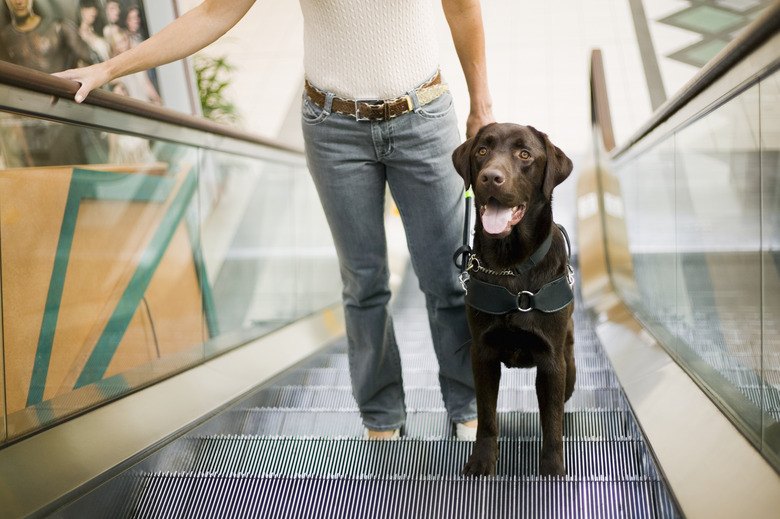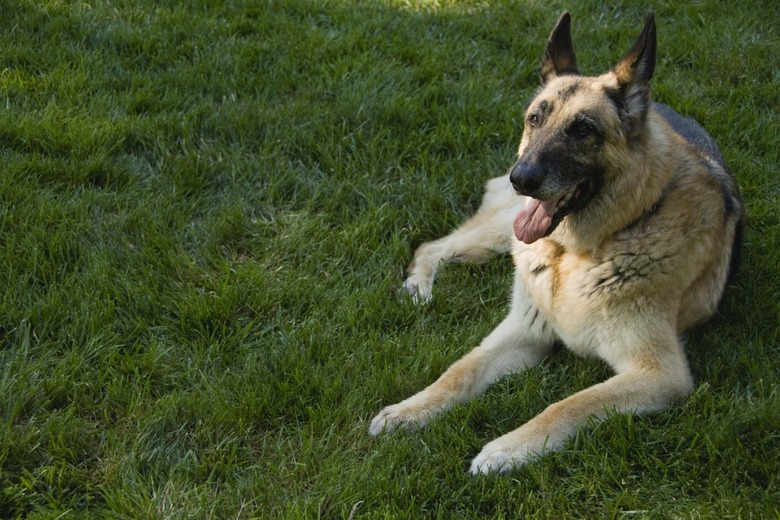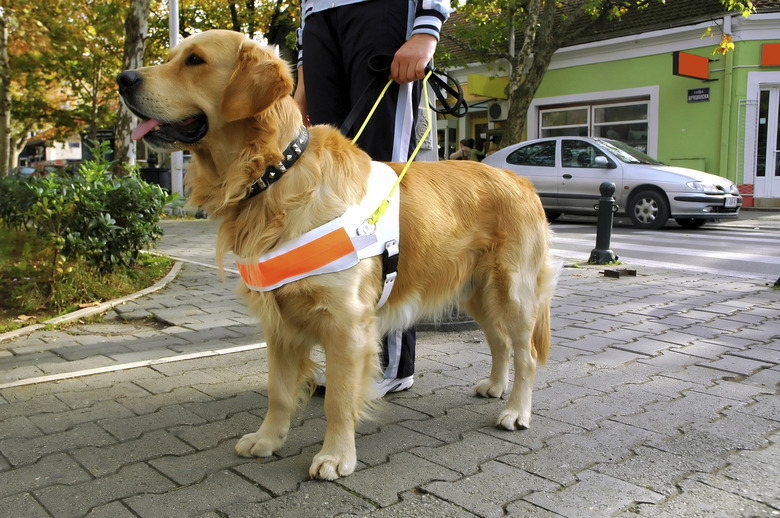How Can Guide Dogs Help Blind People?
A guide dog can help a blind person in many ways, beginning with giving unsighted people independence. Many blind people can't get around without the help of a well-trained guide dog. As with most types of service dogs, guide dogs go through extensive training. It takes between 2 and 5 years for a guide dog to be ready to be matched with a disabled person. Training includes basic obedience and service dog training. Providing protection and companionship are other ways these dogs help blind people.
Guide dog training
Guide dog training
Service dog training takes a minimum of 2 years to complete. In addition to basic obedience, the dog learns how to move forward and to turn right and left on command. More advanced commands include learning how to stop before crossing a street, leading its blindfolded handler around overhangs or other obstacles safely, and retrieving dropped objects. Also, during this time the dog learns only to guard its handler. After successful completion of training, the dog is matched with a blind person.
Despite their extensive abilities at the end of the training, there are some things that guide dogs cannot do. They cannot be expected to establish a route to a new location, nor can they read traffic signs or signals. They take direction from their handlers and offer warnings of any dangers or obstacles along the route.
Under the Americans with Disabilities Act, establishments are not allowed to refuse service to individuals with a service animal. While all guide dogs must be exceptionally well trained to fulfill their role, certification is not required. Many guide dog schools will provide an identification card or certification to help minimize hassles, but these do not offer official legal protections for the handler. Service dogs are legally allowed to enter establishments unless they are posing a real danger. Some states may have additional laws pertaining to guide dogs and other service animals.
Types of service dogs
Types of service dogs
Any well-trained dog can become a guide dog, although some common guide dog breeds for the blind include Labrador retrievers, golden retrievers and German shepherds are the most popular breeds. Standard poodles are another popular option, especially for individuals who have allergies. This is mainly because they have a strong instinct to assist their owners.
Guide dogs must be in good health and free from any genetic health conditions. They must also have a personality that fits the job. Characteristics to look for in guide dogs include a high level of confidence, friendliness, biddability and adaptability. Trainers also look for dogs that are focused and not easily distracted. Another important requirement for a guide dog is that it be large enough to be fitted with a harness and leash. The blind person must be able to reach the harness comfortably.
Good human candidates
Good human candidates
Guide dogs serve blind people as well as individuals who are visually impaired. Handlers too must be trained. Much to the surprise of many of them, they have to learn how to walk again, as oftentimes, blind persons will shuffle along and not move at a speed that a dog can comfortably walk. As they gain confidence in their partnership, they learn to move at a pace better suited to the dog.
Dogs are matched with people based on their specific needs, personalities and lifestyle. Some blind people may not walk enough to keep their dogs happy and healthy, so activity level is an important consideration when pairing guide dogs with their handlers. They must attend a training school as well and pass competency tests. This allows the dog and handler to build a trusting relationship and practice realistic scenarios.
References
- American Kennel Club: 7 Things You Probably Didn't Know About Guide Dogs
- The Seeing Eye: What You Should Know About Service Animals In Public Places
- Service Dog, Therapy Dog & Emotional Support Animal: How are Guide Dogs Trained to Help the Blind?
- Guide Dogs for the Blind: Guide Dog Training
- Guide Dogs for the Blind: Get a Guide Dog
- Guide Dogs for the Blind: FAQs


